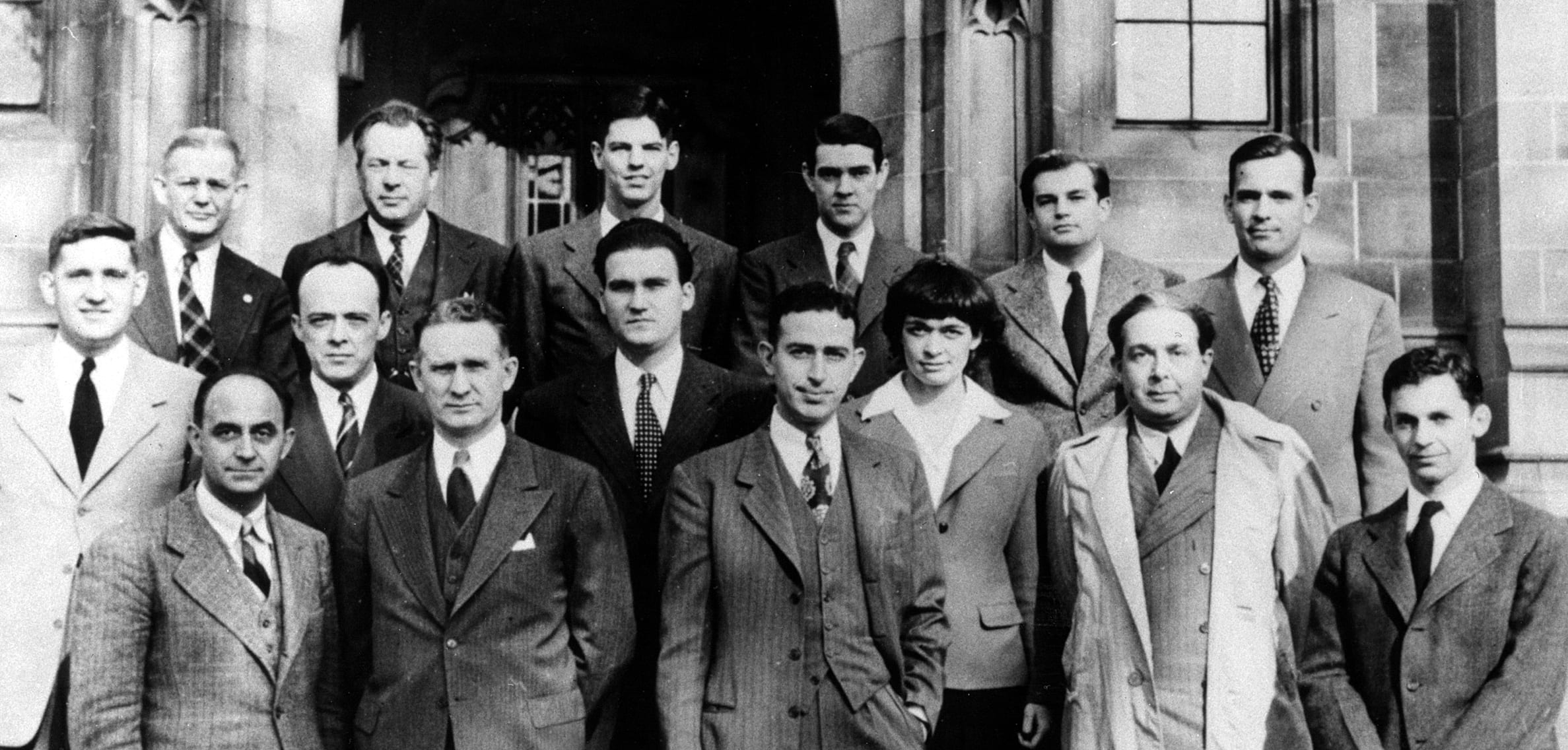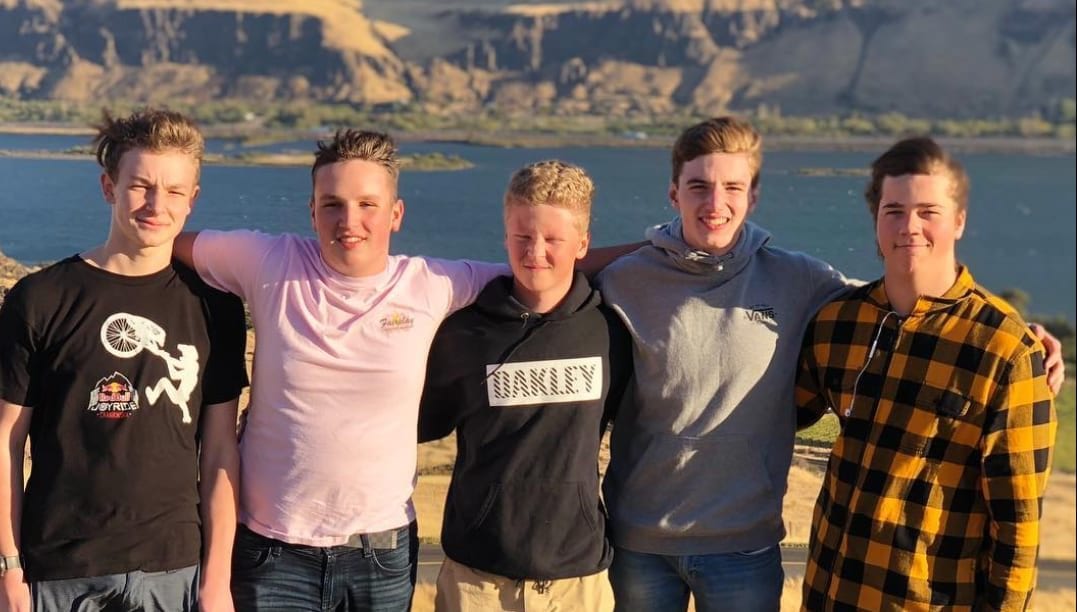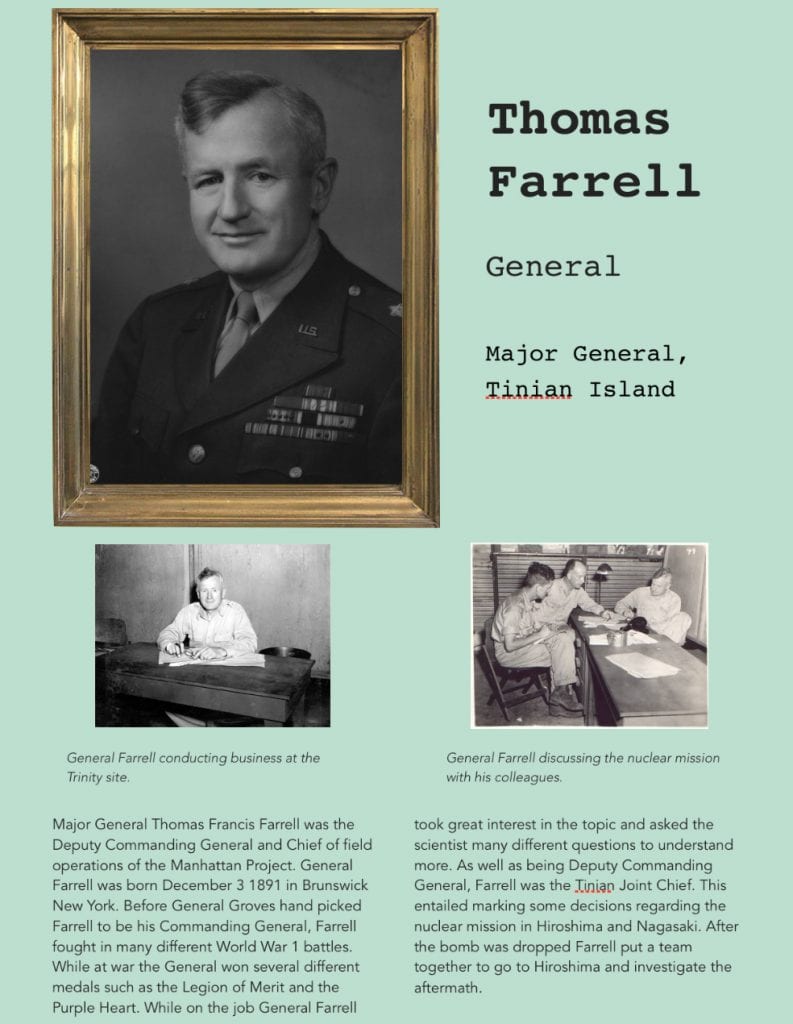The Manhattan Project²
Welcome back to my blog. I would like to start my Grade 11 year off with a bang, literally a bang. Without further ado let’s jump right into it. This first unit is picking up where we left off at the end of Grade 10 when we were studying World War II. We are talking about the Manhattan Project. If you don’t know what the Manhattan Project is well then you have probably heard of what happened in Hiroshima and Nagasaki around 1945. No, still never heard of it? Well this was the year that the US shocked the entire world by dropping the World’s first ever nuclear bombs on Japan. It turns out that the US had been building and testing these nuclear weapons for the previous 6 years. This is the story of the Manhattan Project.
Photo’s of the Manhattan Project:
So this is PLP which follows the criteria of project-based learning so we worked on a project about the Manhattan Project. There were three main sites where the Manhattan Project took place: Los Alamos New Mexico, Oakridge Tennessee, and Hanford Washington. These legendary, historic towns were built from the ground up overnight for the Manhattan Project. Los Alamos was the testing facility for the world’s truly first nuclear bomb named Trinity. Oakridge was the site for the pilot plutonium plant and the uranium enrichment plant and lastly was Hanford. Hanford was the site of the world’s first nuclear reactor.
As part of our learning for this trip we were lucky enough to go to Hanford, Washington, visit the Hanford site and actually get a tour of the B reactor. I do believe that this was a ‘once in a lifetime’ experience. Being able to see the reactor in person really helped me comprehend the dramatic effect the Manhattan project had on the world. Hearing the first hand stories that the tour guides shared with us about their lives while working at Hanford, opened my eyes to the importance this place had to the people of the United States and the world.
The project for this trip and unit was to create a video that would encompass five facts about Hanford. My group was made up of myself, Kate and Sofia. We wanted to focus our video on the environment and the impact that Hanford may have had on the environment. We thought that five environmental facts about Hanford was a good theme. Here is the final product of our video.
As I stated earlier in this post I was fascinated by what these tour guides and retired Hanford workers had to say about how the Manhattan Project and Hanford had impacted their lives. For example our tour guide Larry, stated that “if it wasn’t for the Manhattan Project and the creation of the nuclear bombs that were dropped on Japan then some of my family members would have gone to war in Japan and may or may not have returned.” These real-life stories helped me understand the important impact the nuclear bombs had on the people of America.
While we were learning about the Manhattan Project in class, I started to do my own research about criticism and negative impacts of the Manhattan Project. It is truly astounding to learn the number of fatalities that these bombs caused. Over 226,000 men, women and children lost their lives when these bombs were dropped. Even more interesting is the burden that these bombs put on the world. After the bombs were dropped the world’s eyes were opened to the fact that nuclear bombs were now on the table and the art of warfare would be changed forever. Another related interesting fact was that the scientists who helped create this mammoth weapon later became their own critics and spoke out against the creation. Julius Robert Oppenheimer was an American theoretical physicist and professor of physics at the University of California and since August 6 1945 he has been known as the father of the atomic bomb. Oppenheimer was one of the leading scientists in the Manhattan project alongside Albert Einstein. After the ground breaking creation of the atomic bomb, Oppenheimer was named one of the chairman for the general advisory committee of the United States Atomic Energy Commission. He later used this position to lobby for international control of nuclear power to avert nuclear proliferation and a nuclear arms race with the Soviet Union since they were also creating nuclear weapons.
Los Alamos:The Secret Cities of the Manhattan Project
Leading up to this big project for this unit we had completed other smaller studies to help us understand what the Manhattan Project was really about. Since we are an ipad-based course we played a game called Los Alamos:The Secret Cities of the Manhattan Project. This was a simulation of the three sites that the Manhattan Project was based on: Los Alamos, Oakland and Hanford. In the game we walked around the three sites collecting information as we talked to the different scientist and workers present during the game. After completing achievements by walking around the map and talking to everyone, players move on to the next stage in the operation until getting to the Trinity site where the bomb is dropped. This game really helped me put everything together to help understand what the workers and the scientists had to do on a daily basis as well as what the different sites of the Manhattan Project were like.
Hiroshima and Nagasaki Newsreel
Back in the 1940’s there no 4K tv’s or tv’s in general so when you went to a movie theatre, they would play news reels instead of trailers before the movie started. These were short little clips that would give you the rundown on what’s happening in the world on that day. A fun activity that we had to do was create our own news reel about the bombing of Hiroshima and Nagasaki. These newsreels were only one minute long but they pack a punch and tell you everything you need to know. Unlike a newspaper with only pictures these news reels were the first chances for people to really see in video what happened with the nuclear bombs.
New to PLP this year is a new tool to support our learning. Instead of using Itunes U as a distribution spot for all of our work requirements and reference information, we now use Canvas. This new app allows our teachers to be more creative with how they teach us unlike ITunes U which was more restrictive. So for the Manhattan project we referred to this app to help focus our work on the right requirement in the app. This is also very helpful when it comes time to reflecting on our blogs.
Character Card
Another great example of learning that we had to do was the character card assignment. This assignment was to fill in a template that was kind of based around a baseball card. My character card was Major General Thomas Francis Farrell who was the Deputy Commanding General and Chief of Field operations of the Manhattan Project. General Farrell was handed-picked by General Groves for this position. Major General Farrell played a key role in the nuclear bombings in Japan and investigating the aftermath. Here is my character card:
Learning about the Manhattan project has really opened my eyes to what the world is really capable of. All this learning has showed me that the power that these nuclear bombs hold is nothing to mess with. It can be worrisome for some people to think that different governments around the world hold this power. With one click of a button, millions of people can die but it is really good that we are teaching teens in schools about this important time in history. Students need to know the major damage that these bombs can cause. Hopefully when we grow up and when it’s our turn to take the hot seat, we will have learned from past leaders about what is needed to avoid repeating costly mistakes and how to achieve more global harmony.












